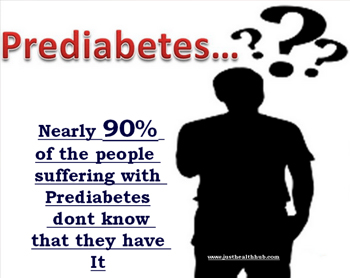
2. Pre-Diabetes Criteria and Risk of Heart Attacks! |

![]() Prediabetes defined by hemoglobin A1c (HbA1c) is associated with worse prognosis than definition by fasting plasma glucose (FPG) or two-hour plasma glucose (2hPG), according to a study published in Diabetes Care.
Prediabetes defined by hemoglobin A1c (HbA1c) is associated with worse prognosis than definition by fasting plasma glucose (FPG) or two-hour plasma glucose (2hPG), according to a study published in Diabetes Care.
![]() Dorte Vistisen, Ph.D., from Steno Diabetes Center Copenhagen, Denmark, and colleagues followed 5,427 participants aged 50 to 79 years without diabetes for a median of 11.5 years. Incidence rates of a major event (nonfatal/fatal CVD or all-cause mortality) were compared for different definitions of prediabetes. Of the cohort, 11.6 % had prediabetes by the World Health Organization (WHO)/International Expert Committee (IEC) criteria (FPG 6.1–6.9 mmol/L and/or HbA1c 6.0–6.4%) and 36.8 % had prediabetes by the American Diabetes Association (ADA) criteria (FPG 5.6–6.9 mmol/L and/or HbA1c 5.7–6.4%). In a subset of 4,730 individuals with additional measures of 2hPG, 14.0% had prediabetes.
Dorte Vistisen, Ph.D., from Steno Diabetes Center Copenhagen, Denmark, and colleagues followed 5,427 participants aged 50 to 79 years without diabetes for a median of 11.5 years. Incidence rates of a major event (nonfatal/fatal CVD or all-cause mortality) were compared for different definitions of prediabetes. Of the cohort, 11.6 % had prediabetes by the World Health Organization (WHO)/International Expert Committee (IEC) criteria (FPG 6.1–6.9 mmol/L and/or HbA1c 6.0–6.4%) and 36.8 % had prediabetes by the American Diabetes Association (ADA) criteria (FPG 5.6–6.9 mmol/L and/or HbA1c 5.7–6.4%). In a subset of 4,730 individuals with additional measures of 2hPG, 14.0% had prediabetes.
![]() The incidence rate in the context of prediabetes versus normoglycemia was 54% and 37% higher with the WHO/IEC and ADA definitions, respectively, which declined to 17% and 12% after confounder adjustment. Prediabetes by HbA1c correlated with a doubling in the incidence rate by the IEC and ADA criteria. Excess risk was reduced to 13% and 17%, respectively, upon adjustment. In the adjusted analysis, prediabetes by FPG or 2hPG was not linked to excess risk.
The incidence rate in the context of prediabetes versus normoglycemia was 54% and 37% higher with the WHO/IEC and ADA definitions, respectively, which declined to 17% and 12% after confounder adjustment. Prediabetes by HbA1c correlated with a doubling in the incidence rate by the IEC and ADA criteria. Excess risk was reduced to 13% and 17%, respectively, upon adjustment. In the adjusted analysis, prediabetes by FPG or 2hPG was not linked to excess risk.
![]() "The excess risk among individuals with prediabetes is mainly explained by the clustering of other cardiometabolic risk factors associated with hyperglycemia," the authors write.
"The excess risk among individuals with prediabetes is mainly explained by the clustering of other cardiometabolic risk factors associated with hyperglycemia," the authors write.
![]()
